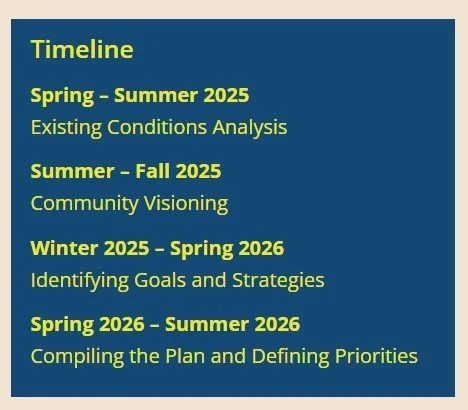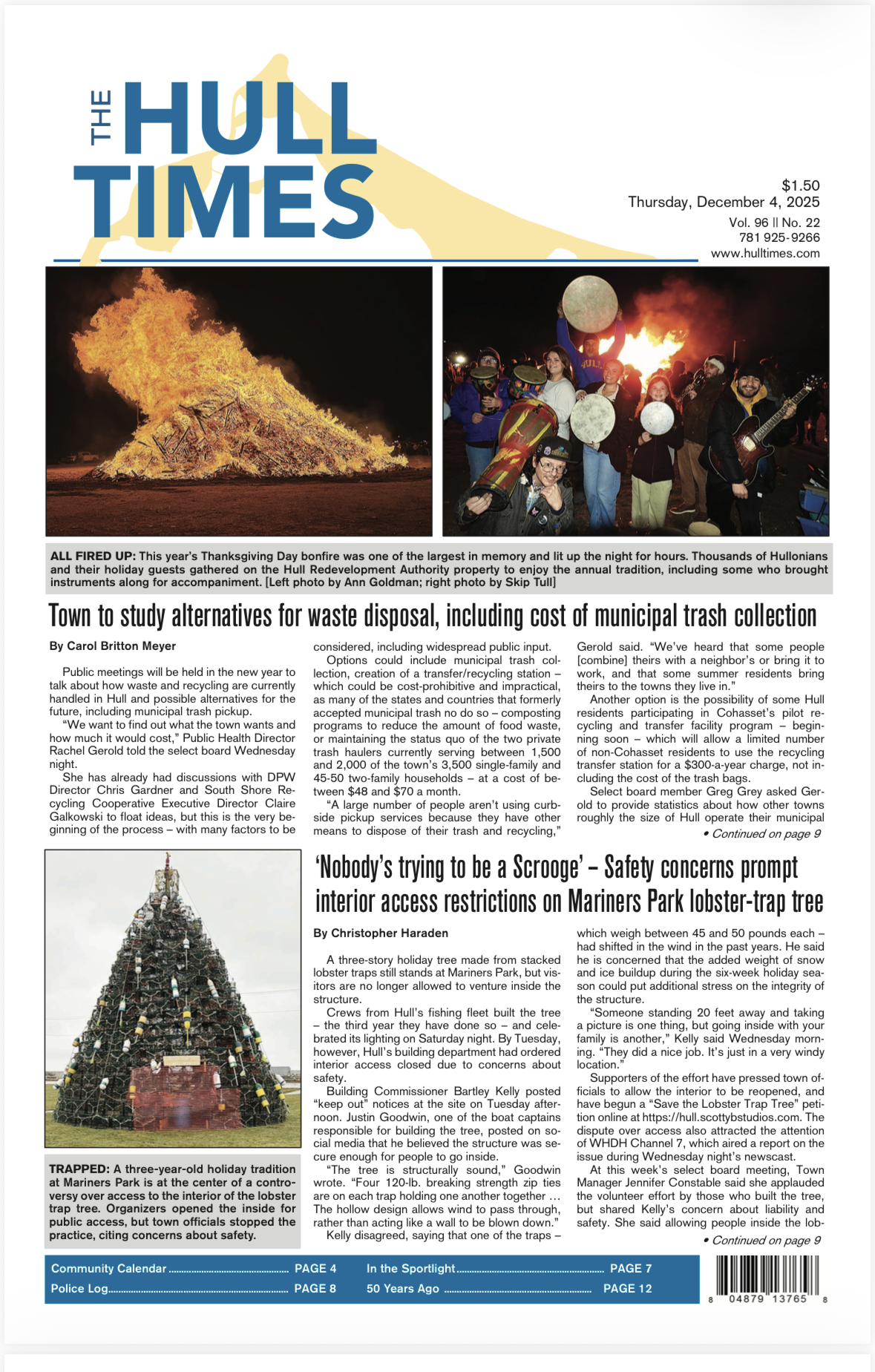Hull’s master plan consultant highlights need for affordable housing, open-space protection
/By Carol Britton Meyer
The Master Plan Steering Committee listened intently to an update this week by a consultant working with the town to create a master plan for Hull, centering around open space and recreation and housing affordability.
The community services and facilities part of the presentation was postponed until another meeting due to time constraints. The town is partnering with the Metropolitan Area Planning Council for this project.
Committee members had an opportunity to ask questions and provide feedback. While there was some concern expressed about the use of reports such as the Unified Work Plan that don’t contain the most up-to-date details, and references to the Hull Redevelopment Authority property that are out of date, the purpose during Monday’s Zoom meeting was to provide a baseline for moving forward – with the final master plan reflecting more current information.
“This is just a presentation with information that won’t necessarily go into the final plan,” Community Development and Planning Director Chris DiIorio said.
Click here for the full presentation from Monday night’s meeting
Getting a sense of direction
The goal, according to senior regional land use and historic preservation planner Sarah Scott, is “to get a sense of which direction to go in and how to prioritize all of this information.”
Paring down all the details “to get the most accurate and up-to-date information would be helpful,” said Chandelle Schulte, who recently replaced fellow planning board member Cindy Borges on the steering committee.
Steering committee member Paul Newman suggested that Peddocks Island be taken out of MAPC’s inventory of Hull’s open space, although he noted that there could be an opportunity for recreation or economic development in the future.
“We can take it out of the [master plan] equation, but could list the opportunities,” Scott said.
The island, although part of the town, is under the Department of Conservation and Recreation jurisdiction, according to DiIorio.
“It’s not easily accessible from Hull, but it is a great open space opportunity,” he said.
‘Rich and diverse mix of open spaces’
According to MAPC staff, who provided an existing condition analysis while also identifying gaps and opportunities for improvement for each category:
Open space and recreation are a key aspect of the town’s identity, with “a rich and diverse mix of open spaces that contribute not only to residents’ quality of life and well-being, but also to the town’s climate resiliency and economic strengths.”
About 82% of Hull residents live within a 10-minute walk of a park or open space.
“Open space [also] attracts visitors and tourists to town,” noted MAPC planner Evelyne St.-Louis.
Expanding walking and biking infrastructure as well as coastal recreation and access is a priority, and there is a need for protection of critical conservation areas, among other findings.
It was also noted that most of the open space in Hull is owned by the town (33%) or the Department of Conservation and Recreation (48%) and that the town is “grappling with a low tree canopy cover.”
Enhancing tree canopy has rewards
Benefits of enhancing the tree canopy relate to increased resilience to heat and floods, better air quality, and public health,” St.-Louis explained.
Hull’s open space and recreation plan was completed in 2019. The town has made investments in community recreation in the past five years, with a significant amount of funding coming from the town’s Community Preservation Act proceeds.
The MAPC presentation also mentioned the importance of meeting the needs of Hull’s growing senior population, including considering the expansion of the senior center’s exercise programs, exploring the possibility of a small fitness center within the existing facility, and creating “walkable and accessible outdoor spaces, i.e. age-friendly seating and exercise equipment.”
Of Hull’s 5,733 housing units, only 1.66% qualify toward the state’s required 10% affordable housing inventory, with minimal recent housing production in the town, MAPC regional housing planner Emma Yudelevitch said.
Forty-five percent of Hull’s housing stock was built before World War II, with less than 8% of housing production occurring in the 21st century.
Housing needs don’t match the supply
It was also noted that Hull’s housing needs don’t match the housing supply and that there’s “a growing wealth gap between renters and owners,” with a median household income of $127,112. To make matters more challenging, housing costs have increased significantly in recent years.
“It’s becoming difficult for Hull’s seniors to age in place,” Yudelevitch said. Forty-two percent of Hull’s households are occupied by seniors, while only about 16% of Hull’s households have children.
There’s also a lack of diversity in housing types. Seventy-three percent of Hull’s homes are detached single-family houses, 20% are multi-family, and 12% are smaller housing types, including studio and one-bedroom units.
Hull has the second-highest share of single-family homes from among context communities – which include Hingham, Ipswich, Nahant, Rockport, and Winthrop – and one of the highest percentages of seasonal housing units, second only to Rockport. Of Hull’s 1,158 vacant housing units, 63% are designated as seasonal.
Another sobering fact is that Hull residents are paying more than they can afford on housing costs, with one-third of the households paying more than 30% of their income on housing, which indicates a need for more affordable housing.
Moving forward
“For me, it’s a matter of what do we do now going forward,” said steering committee member Katie Barclay, chair of the affordable housing committee. “I feel like we’re all scratching the surface for ideas.”
Yudelevitch said she’s looking forward to working with the town to come up with affordable housing strategies that are uniquely suited to Hull.
MAPC staff also provided an update on the master plan visioning survey, including how many citizens have participated so far and related demographics.
Target populations include year-round and summer residents, lower-income households, youth, seniors, and the LGBTQ+ community. High school students are also participating in response to their principal encouraging them to do so.
So far, there have been 562 responses to the survey, as compared with 2,804 voters in the 2025 town election and 318 participants in this year’s annual town meeting.
“We’re trying to reach as many people as possible,” MAPC regional land use planner Jiwon Park said.
The deadline to respond is Sunday, November 2. To take the survey, visit https://mapc.ma/hull-MP-vision.
During the December 8 meeting, MAPC will share an initial analysis of survey responses.
The next steering committee meeting is November 17.
Like what you’re reading? Stay informed and support our work with a Hull Times subscription by clicking here.
Do you have an opinion to share? Click here to write a Letter to the Editor.
© 2025 The Hull Times. All rights reserved.













